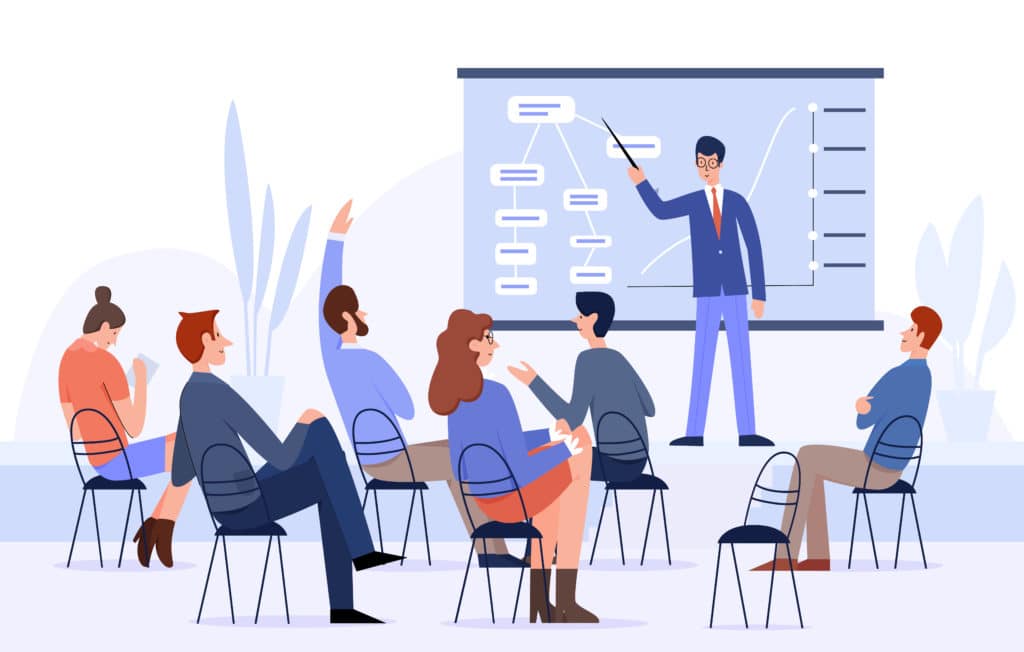The pandemic has brought learning and development to a different level in a significant way. For many of us, work will never be the same as per the new norm. Reporting to physical offices is no longer a necessity but a once in while measure for certain important meetings. Millions of people around the world have become participants of the largest remote work environment in history.
In due time, the pandemic will run its course but what does it mean for us when it comes to learning and development?
Online-Offline Integration
The biggest positive impact that COVID has brought to companies is this – more stable, secure and collaboration technologies have enabled and “forced” employees to quickly adapt to new technologies, continuing to work seamlessly from their homes in a timely manner and serve clients etc.
Many benefits can be seen including access to a bigger talent pool, lower overhead costs and better creativity of ideas at work. However, physical human interaction is still important. Hence the integration of online and offline approaches is going to stay. It is as relevant as it is for the retail or F&B industry. Think “Sephora” and you will understand the meshing of the two. The integration of these two will definitely stay but we need to understand how to balance that according to what is permitted.

Collect Data and Insights with Technology
Whenever it comes to learning and development, data is always important to ensure overall improvement in the company. Data is very important as it is no longer based on putting as much content out there as possible and hoping that your people or colleagues can assimilate it.
With technology enabled business tools, companies can look into cleaning, analyzing and extracting the insides of the data in order to understand where they stay, where they should be and what should be done to reach that point. Akin to iteration in human design thinking, research can be done to identify what do employees need to improve in terms of skills and knowledge etc.
Once an overview of data is concluded and ideas generated for different learning models, the prototypes aka learning models, can be tested to see whether they work and amendments can be made instantaneously. Combined with agility, the best learning model can be determined quickly within a specific time frame.
Enable A Lifelong Learning Culture
Companies can only succeed and enjoy continual business turnover when a lifelong learning culture is encouraged. There were times when you need to dictate what employees should learn but overall, a lifelong learning culture should be enabled to ensure a continuous and creative flow of innovation at work.
Steps like allowing employees to to self-direct their learning, connecting employees with inspirational mentors, making learning goals equally important as performance goals, creating opportunities for social learning, building a cloud library of learning resources and recognizing learning as an achievement will help and motivate employees to adopt a healthy appetite for proactive learning culture.
In the long run, it not only boosts employee productivity and performance, but also increases creativity and innovation in the workplace. As a result, the company gets to enjoy years of continual business growth and turnover.

Monitor The Trends and Identify The Gaps
If you look at learning and development prior to what’s happening today, you would notice that more companies would run by reacting to what is happening. Skills, suggestions or behaviour would be recommended to encourage the companies to take into consideration. The learners would have catalogues to choose from and select the topics which they think is relevant to them.
Traditionally, this would make sense for a while but in the long run, what actually works better is looking into current and anticipate future trends so as to get a competitive advantage in understanding what are the necessary skills today and tomorrow, thereby guiding learners along that path.
Companies would need to perform a review of their business strategies, processes, goals and employees’ skills. Some of them include looking at standard operating procedures (SOPs), key performance indicators (KPIs) and employee assessments, future desired state for the business etc. It is always best to cover all bases with data gathering and thorough analysis before making informed decisions on the next step.
Reskill to Stay Relevant
With the rise of technology and consumer behaviour, the way companies operate needs to evolve with the passing of time. Knowledge and skills learnt in the past might not apply and work for solving today’s problems. These are no longer enough to maintain business turnover and generate new sales.
So how do companies stay relevant? Experience, knowledge and skills necessary for the job are just part of the whole relevancy package. Automation has become a necessary process in many companies with new technology and artificial intelligence etc, replacing some of the manual labour. Therefore employees need to reskill frequently to stay relevant and abreast of industry trends because nobody is indispensable.
Add in soft skills like empathy, problem solving skills, creativity, passion, perseverance and curiosity – now that’s what you call the ultimate relevancy combo! Just knowing how and what to do is not enough, employees need to know what and how to do at the right time.

Keep It Simple and Enjoyable
Many people are afraid of turning digital completely and even though there are increasingly more people becoming open to digitalization, the power of resistance should not be underestimated.
When it comes to implementation of anything new, the rule “Simplicity is best”, will be the best guideline to follow. Make the whole learning process simple and enjoyable by incorporating different elements – break the lessons into bite sized modules, playing games, creating group time and hands on learning, will help to ease the fear and increase the appetite for learning.
Companies need to support their employees by taking time to listen and address their concerns, provide them with sufficient help and resources at the right time so the learning and development department becomes a part of the operation while enabling everyone to adopt this lifelong learning culture, making the integration seamless.
In summary, learning and development have become a fundamental part of the journey for companies to stay relevant. It can no longer be the same old, same old, but rather, a lifelong learning culture and agility so as to stay on top of the game even in the event of unforeseen circumstances.
Do you need to stay abreast of industry trends, develop a lifelong learning culture and create agility in your organization? Write to us at info@businessacademia.co
Business Academia’s Vision
Our goal is to connect the space between Business Goals, Results and People’s Engagement with consultancy services, tailored experiential workshops and training. We use effective facilitation methods such as Design Thinking to define, together with you, how to engage and motivate people to the desired Change and Action.
More information @ www.businessacademia.co



